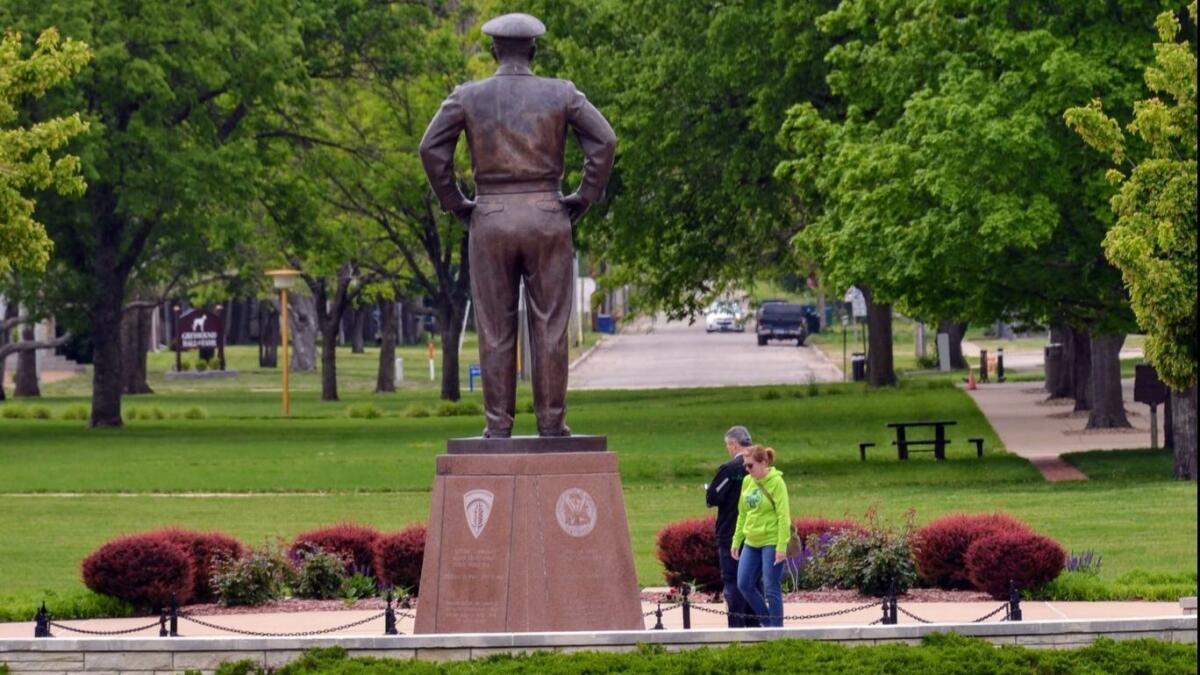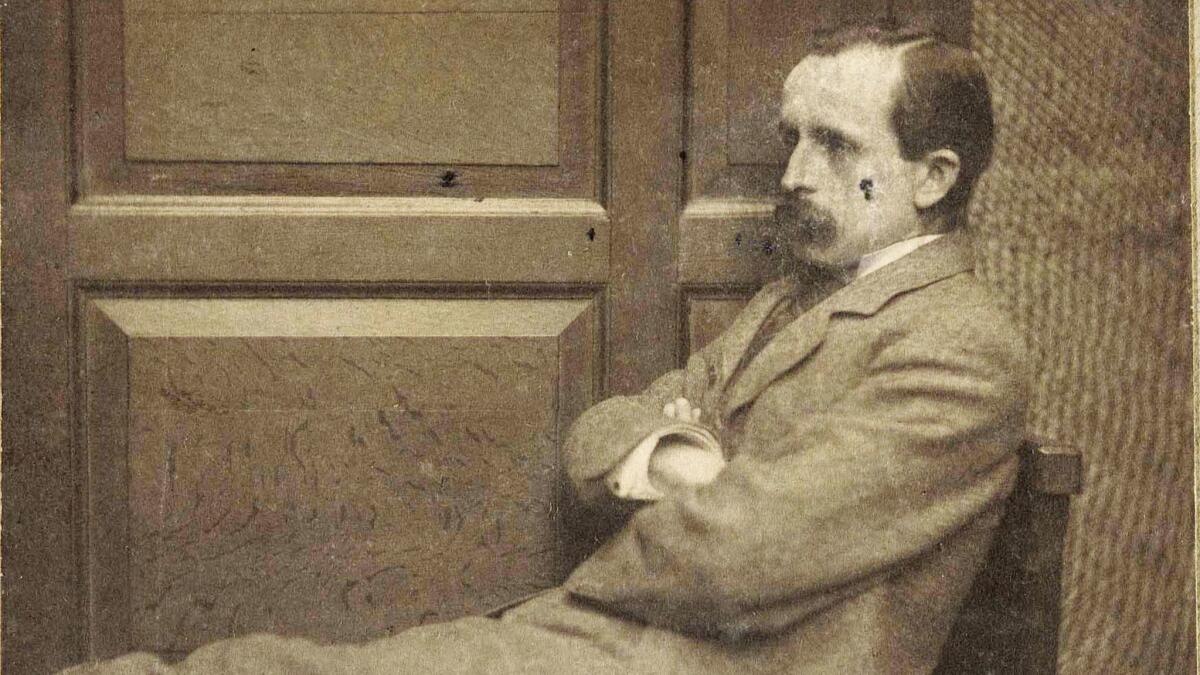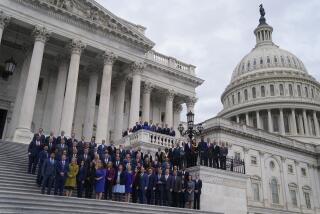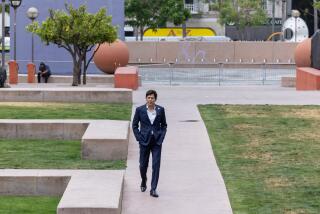Newsletter: Escapes: On D-day, we remember the man who bore the weight of the world

How do you do it? How do you keep a museum about arguably the most important man in the 20th century from becoming a shrine?
It’s a question that staff at the Dwight D. Eisenhower Presidential Library and Museum in Abilene, Kan., grapple with constantly.
Director Dawn Hammatt, curator William Snyder and others acknowledge an emotional attachment to the president and first lady.
Maybe — or perhaps especially this year, on the 75th anniversary of the D-day invasion — the enormousness of Eisenhower’s task as supreme commander of the Allied forces in Western Europe comes into sharper focus.
My perspective on Eisenhower changed after a visit to Abilene, Kan., where he grew up and is now home to the 22-acre campus, which also contains his boyhood home. He had seemed to me to be an affable fellow (although he had a notorious temper) who played a lot of golf and dabbled in politics. What I soon realized was that the man who tamed the egos of other military men and managed to pull off the invasion of Normandy used those same skills as president to work for peace, never mind cajoling and persuading Democratic-controlled Congress six of his eight years.
The museum is being renovated — it was delayed by the 35-day partial government shutdown in the winter — and is aiming to be done by the end of July. Even if I weren’t a presidential library geek, I’d return. There is so much more to learn.
If you’re a student of the world, you’ll learn about a range of issues in this week’s newsletter: how a daughter tracked down an orphan her dad befriended after the invasion of Normandy, how the Germans nearly killed gentle Guernsey in World War II; what will happen with Cuba travel after the newly released regulations; why a cellphone may not be enough to navigate with; where to find more free parking in Las Vegas; how to eat your way through California; and more.
And if you’re planning to travel this summer, the End paper asks you to reflect, once again, on why World War II will always matter.
Peace out.
What if it hadn’t worked?
There were so many variables in the ultimate success of D-day, not the least of which was the weather. When you realize that Eisenhower had no battlefield experience in World War I and that he was catapulted into the role as the make-or-break guy, it seems unbelievable. The twists and turns to June 6, 1944, and beyond are gut-wrenching, even though you know how this story ends. I can’t recommend a trip to Abilene more highly for a look at the humble origins of an unlikely (but ultimately perfectly logical) hero.

Finding Gilbert
Diane Covington-Carter has a direct connection to the invasion of Normandy. Her father spent five months with the forces in 1944, and during his time there, he befriended a young orphan named Gilbert. He moved on as his service required, but he never forgot the boy. After her father died, Covington-Carter vowed to find Gilbert, and her search helped her put in place some of the puzzle pieces of her life. Read her poignant Departure Points story.

A novel place to learn WWII history
You may be a fan of the 2008 book “The Guernsey Literary and Potato Peel Pie Society,” which introduced some of the island’s wartime history. A visit to this place in the English Channel reinforces its frightening history but also introduces travelers to the beautiful side of an island Victor Hugo once called home, Julie L. Kessler writes.
Happy 100th, Grand Canyon
We know that the Grand Canyon is more than a century old. In fact, it may be 6 million years old and maybe more. But the National Park Service took a few millenniums to catch up with civilization and bring the canyon into its fold. It is that date that we celebrate in Jay Jones’ piece on seeing the canyon without the crowds.
How the new Cuba travel regulations affect you
The Treasury Department announced new rules for travel to Cuba, eliminating what had been a popular category for travelers: people-to-people group tours. Cruises also may be eliminated. Read Mary Forgione’s piece on what you need to do if you had planned to book and or already had. Also on Wednesday, some cruise companies began issuing refunds.

Boy, do you get around
Some of you, exceptionally well. That’s because you have chosen your preferred method of navigation well. That varies from person to person, but here are three ways you might be able to find your way a little more easily, On the Spot reports. You need to take into consideration your own skills (and sense of direction), whether you’ll be in cellphone range or whether a stand-alone GPS works better and, of course, your own tolerance for being lost.
What’s better than finding parking in Vegas? Free parking
One of our most popular stories on Las Vegas was “9 Places to Find Free Parking in Las Vegas.” It had gotten a little long in the tooth, so Jay Jones updated it and added five more spots. If you’re headed to our adult playground, you may be able to save yourself some serious bucks by using one of the free places.
The feast that is California
Agriculture may be decidedly less glamorous than entertainment, but both play an important role in the economy of the Golden State. Ag produced about $50 billion in receipts in 2017, according to the California Department of Food and Agriculture, so it makes sense to throw a party in honor of (fill in the blank) crop. Mike Morris tells us about some of the festivals of food.
From ugly duckling to swan
OK, maybe it’s not quite that dramatic, but artist Eduardo Bolioli takes surfboards that have been rejected at the factory, Jay Jones writes, and uses them to create works of art. The exhibit opens June 22 at the Four Seasons Resort Oahu in Ko Olina.
Make mine a tiny triple, thanks
You still have time to make the June 13-15 run of San Francisco’s weirdest pop-up bar. Two things might deter you: One, it’s not inexpensive and two, the floor show, as it were, is rats, Chris Erskine writes. The Rat Bar is populated not by those vile creatures that run the streets but by rescued animals. (Rats do make great pets, by the way.) Plus where else can you order an Ama-RAT-o-Sour?
A new way to submit your summer vacation photos
Our reader photo issue is set for Sept. 22, and we’re asking you, once again, to tell you what you did this year on your summer vacation. This year, we have a new way to access the form that should make submitting your photos easier. Read the rules and how to send us your best shot.
What we’re reading
The thrill of being late: Those people who are running frantically to their airline gate? They may not have gotten stuck in traffic; they may prefer the thrill of the close call, Amanda Mull writes in the Atlantic. Mull quotes her colleague Ellen Cushing, a senior editor at the Atlantic, as saying, “I just really live for the feeling of literally running through the airport barefoot because you didn’t have time to put your shoes on after security, and your laptop is in your hand because you didn’t have time to put it back.” Those of us who are compulsively early are … appalled.
The question: But why? Why would you smuggle thousands of leeches in a carry-on bag? We will have to search our souls for the answer, but know that this didn’t turn out well for the Canadian traveler who was with about 5,000 of them at the Toronto airport, according to TravelMole website: He was fined $11,000 for carrying the medicinal leeches, which, TravelMole said, require a permit.
On a happier note note, Brigit Katz, writing for Smithsonian.com, reports that a garden where “Peter Pan” author J.M. Barrie played as a child (and may have inspired his writing) has opened in Dumfries, Scotland. It also contains the National Centre for Children’s Literature and Storytelling and required $10 million in renovations (including to the 19th century house known as Moat Brae). The gardens include a pirate ship; no mention of whether Capt. Hook is in residence. Lots of reading nooks in what the Guardian calls a “modern–day Neverland.”

Tell us what you think and get this newsletter free
OK, the newsletter would be free anyway, but did you know there are others as well? You can find all of them at membership.latimes.com/newsletters.
What’s not completely free: the L.A. Times. You can try it out for three months for free, though, and that’s a bargain at half the price. It works out well: You support our work, and we give you access to news of your community, your state and the world (and, in the Travel section, how to navigate that world). Thank you.
End paper
I was taking a breather on a bench outside the Place of Meditation on the campus of the Dwight D. Eisenhower Presidential Library and Museum in Abilene. Eisenhower, his wife, Mamie, and their young son, Doud, are buried there.
I wondered how this man bore the pressure as he planned the invasion of Normandy, France. Cigarettes were a constant. (William Snyder, the curator at the library and museum, told me Eisenhower finally quit after issuing himself an order to do so.) In “Eisenhower: Soldier and President,” author and historian Stephen E. Ambrose writes about Ike’s showing the fatigue that came with the enormous responsibility.
After the war, he could have retired from public life, but he went on to run for and win the presidency twice and tried to work for peace in a world increasingly clouded by the Cold War. He suffered a heart attack in 1955 in his first term as president and dealt with heart and other ailments until his death in 1969, which was preceded by nine months in Walter Reed hospital.
“He went out like a general, commanding his troops and in complete control,” Chester J. Pach Jr. wrote on the website of the Miller Center, which describes itself as a “nonpartisan affiliate of the University of Virginia that specializes in presidential scholarship, public policy and political history.”
“He ordered the doctors and nurses attending him to lower the shades and pull him up to a sitting position in bed,” Pach wrote. “Then holding Mamie’s hand, Eisenhower looked at his son, John, and grandson, David, and softly issued his final order, ‘I want to go; God take me.’ With these words, he died.”
As you travel this summer and beyond, revel in the knowledge that getting to go to the far reaches of the world is just one small example of how Eisenhower and men and women like him sacrificed to ensure our freedom.
With that in mind, remember to travel safely and well, and know that we will be here to welcome you home.

More to Read
Sign up for The Wild
We’ll help you find the best places to hike, bike and run, as well as the perfect silent spots for meditation and yoga.
You may occasionally receive promotional content from the Los Angeles Times.







